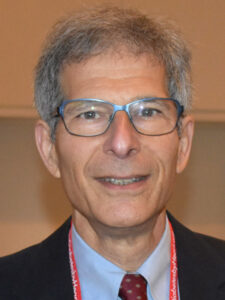The results of four recent and ongoing studies from the TrialNet network were presented Sunday morning at the Scientific Sessions. TrialNet is a global consortium of researchers dedicated to preventing type 1 diabetes and stopping disease progression by preserving insulin production before and after diagnosis.

Susanne M. Cabrera, MD, Assistant Professor of Pediatrics (Endocrinology) at the Medical College of Wisconsin, presented research examining innate inflammation at type 1 diabetes onset as a predictor of disease progression and therapeutic responsiveness.
“As we all know, type 1 diabetes has the common endpoint of T-cell mediated destruction of pancreatic β-cells, but the presence of multiple underlying pathways to that endpoint is clearly suggested by variability in clinical phenotype, as well as variability in pre- and post-onset rate of β-cell decline,” Dr. Cabrera said.
This variability in β-cell decline, she said, mandates long and fairly large clinical trials to power the most common and clinically relevant primary outcome measures and disease-modifying therapies.
“If we were able to identify rapid progressors quickly and early, we could have shorter studies with fewer participants and reduce the risk-to-benefit ratio, as we would only be enrolling subjects who might be able to have a slower rate of C-peptide decline,” Dr. Cabrera said.
Using the Weighted Gene Co-expression Network Analysis (WGCNA) method for identifying and analyzing clusters of highly correlated genes, Dr. Cabrera and her research colleagues identified four subgroups, ranging from “predominantly slow progressors” to “predominantly fast progressors.”
“We found that the youngest, most vulnerable subjects frequently have the most aggressive disease trajectory, characterized by lower residual β-cell function at diagnosis and the fastest rate of C-peptide decline,” Dr. Cabrera said. “Plasma-induced transcription and WGCNA can be useful in predicting disease trajectory and therapeutic responsiveness. And while WGCNA has identified four main subgroups, validation across a larger patient population is needed.”

Peter Gottlieb, MD, Clinical Division Faculty at the University of Colorado School of Medicine, presented research looking at the effects of oral insulin on antibodies.
“We’ve been thinking in the field for a long time that antigen-specific therapy should have a role in the therapy of autoimmune diseases and type 1 diabetes,” Dr. Gottlieb said. “In animal models, we’ve seen evidence that this could work in some autoimmune conditions, particularly peanut allergy.”
Dr. Gottlieb cited the recent PrePOINT (Effects of High-dose Oral Insulin on Immune Responses in Children at High Risk for Type 1 Diabetes) study, in which higher doses of oral insulin (67.5 mg daily) were shown to induce changes in autoimmune responses in young individuals at high genetic risk for type 1 diabetes.
Dr. Gottlieb and his colleagues sought to determine how short-term therapy with oral insulin affects the autoimmune response in type 1 diabetes and how dose and dosing frequency affect the ability of oral insulin to modulate immune responses. Participants in the study were randomized to either 67.5 mg of oral insulin daily or 500 mg of oral insulin biweekly. The primary outcome was change in immune function as assessed by type or quantity of T lymphocyte or autoantibody biomarkers of β-cell specific immune responses.
“We found that daily oral insulin at 67.5 mg induces autoantibody changes in both mIAA and GADA autoantibodies, while biweekly oral insulin did not have this effect,” Dr. Gottlieb said. “Changes in mIAA titers, GAD AB titers, and IAA subtypes argue against anergy being the mode of action of oral insulin.”
Moving forward, Dr. Gottlieb said control antibody responses are being examined to see how global the immune deviation from oral insulin may be, and correlation to T-cell studies are ongoing.

Michael J. Haller, MD, Professor and Chief of Pediatric Endocrinology at the University of Florida, reported two-year outcomes from a clinical trial studying low-dose anti-thymocyte globulin (ATG) and granulocyte-colony stimulating factor (GCSF) in new-onset type 1 diabetes.
“In this study, we utilized only new-onset subjects, defined as those with less than 100 days of diagnosis, and subjects aged 12 to 45 were enrolled,” Dr. Haller said. “This three-arm study was really designed as two separate trials—one looking at low-dose ATG versus placebo and the other looking at ATG/GCSF versus placebo.”
Dr. Haller reported that both ATG and ATG/GCSF therapy resulted in a significant reduction in A1C compared to placebo, resulting in mean A1C less than 7 percent one year following therapy in both active treatment arms.
“When looking at the primary outcome measure of AUC C-peptide, we found that low-dose ATG therapy resulted in significant preservation of insulin production compared to placebo,” he said. “Interestingly, the combination of low-dose ATG/GCSF did not achieve statistical significance. We believe the two-year clinical and six-month flow cytometry data strongly support the use of low-dose ATG in studies aimed at preventing type 1 diabetes.”

Kevan C. Herold, MD, Professor of Immunobiology and of Medicine (Endocrinology) at Yale University, presented stage 2 results from the Teplizumab Prevention Trial, which suggest that teplizumab delays clinical diagnosis of type 1 diabetes an average of two years.
“Five previous studies have suggested that the FcR non-binding anti-CD3 monoclonal antibody, teplizumab, reduced loss of ẞ-cell function as long as seven years post-diagnosis,” Dr. Herold said. “To build on these earlier results, TrialNet designed and implemented this study to test whether treatment with teplizumab would prevent or delay the onset of type 1 diabetes in those at high-risk for development of disease.”
In the double-masked, placebo-controlled, randomized trial, 76 participants (55 of whom were younger than age 18) received either teplizumab or a placebo over 14 days with daily, 30-minute intravenous drug infusions. The researchers followed participants until 42 of the enrolled participants were diagnosed with type 1 diabetes.
“This is the first time we have showed that immune therapy can delay progression to type 1 diabetes,” Dr. Herold said. “A single, two-week treatment with teplizumab delayed the onset of type 1 diabetes in non-diabetic relatives who were at very high risk for development of clinical type 1 diabetes. The delay in the median time to diabetes was two years. Additionally, we found that subgroups of individuals, identified by characteristics at screening, may have particularly robust responses to teplizumab.”